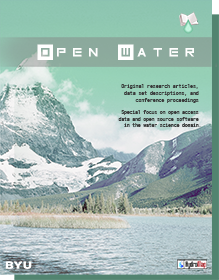Abstract
The European Union Water Framework Directive (EU-WFD) called its member countries to achieve a good ecological status for all inland and coastal water bodies by 2015 (EU, 2000). However, the River Zenne (Belgium) is far from this objective. Therefore, an interuniversity and multidisciplinary project “Towards a Good Ecological Status in the River Zenne (GESZ)” was launched to evaluate the effects of wastewater management plans on the river. In the framework of this project, different models have been developed and integrated using the Open Modelling Interface (OpenMI) (Gregersen et al., 2007). The hydrologic, physically-based, semi-distributed Soil and Water Assessment Tool (SWAT) (Arnold et al., 1998) is hereby used as one of the model components in the integrated modelling chain in order to model the upland catchment processes.
The assessment of the uncertainty of this hydrologic model is an essential part for decision making, in order to design robust management strategies that take the predicted uncertainties into account. Hereby, it needs to be considered that the model uncertainty does not only stem from the parameter uncertainty, but also from the uncertainty on the input data (e.g, rainfall), the uncertainty on the calibration data (e.g., stream flows) and the uncertainty on the model structure. These sources of uncertainty have already been considered and treated in the SWAT model of the River Zenne (Leta et al., 2013). The aim of this paper is to assess the impact of considering the different sources of uncertainty on the model parameter distributions and model outputs. For the assessment processes, we applied the differential evolution adaptive metropolis that uses sampling from the past states and snooker update to generate candidate points in each individual chain, (DREAM(zs)) algorithm (Vrugt et al., 2009).
BYU ScholarsArchive Citation
Leta, Olkeba Tolessa; Nossent, Jiri; Velez, Carlos; Shrestha, Narayan Kumar; van Griensven, Ann; and Bauwens, Willy
(2013)
"The impact of considering different sources of uncertainty on a SWAT model parameter distributions and model outputs: the River Zenne (Belgium) case study,"
Open Water Journal: Vol. 2:
Iss.
1, Article 29.
Available at:
https://scholarsarchive.byu.edu/openwater/vol2/iss1/29
